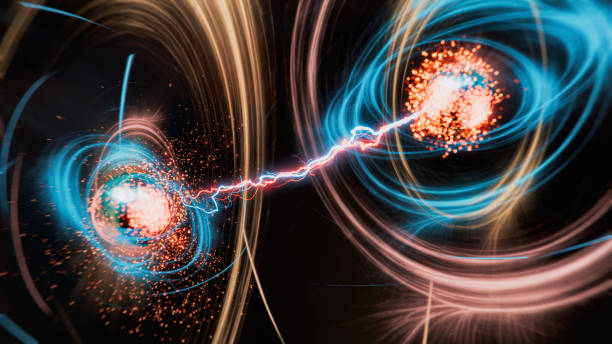Quantum physics is the branch of science that explores the tiniest building blocks of reality — atoms, electrons, photons, and even smaller particles. At this microscopic scale, the universe behaves very differently than it does in our everyday experience. Instead of moving predictably like billiard balls, particles exist in a blur of possibilities, waves, and probabilities.
Central to understanding this strange realm is the concept of the wave function. The wave function is a mathematical tool that encapsulates everything we can know about a quantum system. But what exactly is a wave function? How does it shape our understanding of reality? And why does it make the universe so wonderfully weird?
This article dives deep into the nature, meaning, and mysteries of the wave function, unfolding one layer at a time to reveal why it is one of the most fundamental yet puzzling ideas in modern physics.
The Birth of the Wave Function: Historical Background
The origins of the wave function trace back to the early 20th century when classical physics began to break down under the weight of new experimental results. The famous double-slit experiment, the discovery of the photoelectric effect, and the behavior of electrons in atoms all suggested that matter had both particle-like and wave-like properties — a shocking revelation that defied centuries of scientific thought.
In 1926, the Austrian physicist Erwin Schrödinger introduced the wave function in his groundbreaking wave equation, which mathematically described how quantum states evolve over time. Schrödinger’s equation provided a new way to predict the behavior of quantum particles, not by specifying exact positions and velocities, but by describing a wave spreading through space that encoded the probabilities of where particles might be found.
This wave function was not a physical wave in the sense of water or sound but a mathematical object living in an abstract, multidimensional space. Schrödinger’s formulation ushered in the era of modern quantum mechanics, making the wave function central to how physicists understand the quantum world.
What Is a Wave Function?
At its core, a wave function is a complex-valued mathematical function, typically denoted by the Greek letter ψ (psi). It describes the quantum state of a system — be it a single particle, like an electron, or an entire collection of particles.
Unlike classical physics, where a particle has a definite position and momentum at every instant, quantum mechanics tells us that particles exist in a cloud of possibilities. The wave function encapsulates all these possibilities simultaneously.
More precisely, the wave function assigns a complex number to every possible configuration of the system. The magnitude squared of this number, |ψ|², gives the probability density of finding the particle in a particular place or state when a measurement is made. This probabilistic interpretation was first proposed by Max Born and remains a cornerstone of quantum mechanics.
In simpler terms, if you imagine the wave function as a “wave” stretching across space, the height of this wave at any point indicates how likely you are to find the particle there when you look. High peaks correspond to high probabilities; valleys correspond to low probabilities.
The Mathematical Form of the Wave Function
Wave functions can be incredibly complex, depending on the system. For a single particle moving in one dimension, the wave function might look like ψ(x, t), a function of position x and time t. For particles in three-dimensional space, it becomes ψ(x, y, z, t).
But wave functions can also describe more abstract properties beyond position, such as spin or momentum, and can describe multiple particles simultaneously. When many particles interact, the wave function resides in an abstract multidimensional space called Hilbert space.
One key feature is that the wave function is complex-valued. This means it has both a real part and an imaginary part, similar to how numbers can have components along the real axis and the imaginary axis in the complex plane. These components interfere with each other, creating patterns that give rise to quantum phenomena like interference and entanglement.
The time evolution of the wave function is governed by the Schrödinger equation, which is often compared to classical wave equations but has unique features tied to quantum mechanics. This equation describes how the wave function changes over time, essentially describing how the quantum state “moves” through its abstract space.
Probability and Measurement: From Possibility to Reality
Perhaps the most famous and confounding aspect of the wave function is its role in the measurement problem. Quantum mechanics tells us that before measurement, particles are not located in one definite place but exist as a superposition of multiple possibilities encoded in the wave function.
When we perform a measurement, however, this superposition appears to “collapse” to a single outcome — the particle is found at a definite position or with a specific momentum. This abrupt change is not described by the Schrödinger equation and remains one of the deepest mysteries in quantum theory.
The Born rule provides the key link: the probability of each possible measurement outcome is proportional to the square of the wave function’s magnitude at that point. But why and how the wave function collapses upon observation is still debated, inspiring interpretations such as the Copenhagen interpretation, many-worlds, de Broglie-Bohm theory, and others.
The Physical Reality of the Wave Function: What Is It Really?
Is the wave function a real physical wave, or just a mathematical tool? This question has sparked philosophical and scientific debates for decades.
Some physicists view the wave function as a real entity — a kind of “quantum field” that exists objectively, shaping the behavior of particles. Others see it as a representation of our knowledge or information about a system, not something physically tangible.
This debate touches on deeper questions about reality, knowledge, and the nature of existence. The wave function straddles the boundary between the known and the unknown, the actual and the possible, forcing us to rethink what it means for something to be “real.”
Wave Function Examples: Visualizing Quantum Behavior
To grasp the power of the wave function, it helps to consider a few famous examples.
One such example is the particle in a box — a simple quantum system where a particle is confined to move between two fixed points. The wave function forms standing waves inside the box, with certain allowed energy levels corresponding to different wave patterns. The particle can only exist in these discrete states, unlike classical particles that could have any energy.
Another striking example is the double-slit experiment, where electrons or photons are fired at two slits. The wave function passes through both slits simultaneously and interferes with itself, creating a characteristic pattern on a screen that reveals the wave nature of matter. When measured, the particle seems to choose one slit, but the interference pattern reflects the full wave function’s behavior.
Wave Function in Many-Particle Systems and Entanglement
While single-particle wave functions are complex but somewhat intuitive, things become even more fascinating when multiple particles are involved. The combined wave function describes the entire system and cannot, in general, be separated into independent parts for each particle.
This inseparability is at the heart of quantum entanglement, where the state of one particle instantly influences the state of another, regardless of the distance between them. Entangled particles share a joint wave function that encodes correlations stronger than anything possible in classical physics.
Entanglement has profound implications, not only for our understanding of reality but also for emerging technologies like quantum computing and quantum cryptography.
The Wave Function and Quantum Technologies
The practical importance of the wave function extends beyond theoretical physics into cutting-edge technology. Quantum computing, for instance, leverages the ability of quantum systems to exist in superpositions of states, as described by their wave functions, enabling computations far beyond classical capabilities.
Quantum cryptography exploits the principles of quantum measurement and wave function collapse to create secure communication channels that cannot be intercepted without detection.
Even quantum teleportation, a method of transmitting quantum information, relies on the manipulation and understanding of wave functions in entangled systems.
Challenges and Interpretations: The Mystery Remains
Despite its central role, the wave function remains mysterious. Different interpretations of quantum mechanics offer radically different views on what the wave function means.
The Copenhagen interpretation sees the wave function as a tool for calculating probabilities, collapsing upon measurement. The Many-Worlds interpretation suggests that all possible outcomes occur in branching universes, with the wave function never collapsing. The de Broglie-Bohm theory introduces hidden variables guiding particles along deterministic trajectories while the wave function pilots the motion.
Each interpretation has strengths and challenges, and no consensus has been reached. This ongoing debate reflects the deep philosophical and scientific puzzles at the heart of quantum physics.
Conclusion: The Wave Function as a Gateway to Quantum Reality
The wave function is one of the most profound concepts ever devised by human intellect. It encapsulates the strangeness and beauty of the quantum world, where certainty gives way to probability, and reality unfolds as a tapestry of possibilities.
Through the wave function, physicists can predict with remarkable accuracy how particles behave, even if the underlying nature of that behavior remains mysterious. It is a bridge between the abstract mathematical universe and the tangible physical world, a tool that challenges us to rethink our notions of existence, knowledge, and measurement.
As quantum science and technology continue to advance, the wave function will remain a vital key to unlocking the secrets of the universe, inspiring wonder and discovery for generations to come.





